Scientific research and debate over “greenhouse effect” and carbon dioxide on the climate has gone on for more than 200 years – with research and theories, rich disputes, and valuable discussion.
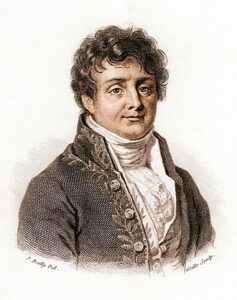
1820s – Joseph Fourier conducted experiments comparing the influence of the atmosphere to the heating of a closed space.
1820
Joseph Tyndall measured energy absorption by different gases – found that carbonic acid (hydrated version of carbon dioxide) abs by different gases – found that carbonic acid (hydrated version of carbon dioxide) absorbs energy 150X faster than regular air.
1859
Svante Arrhenius wrote an article in Philosophical Magazine and Journal of Science that was “the first to quantify the contribution of carbon dioxide to the greenhouse effect (Sections I-IV) and to speculate about whether variations in the atmospheric concentration of carbon dioxide have contributed to long-term variations in climate.”
1896
T.C. Chamberlain, Professor of Geology at the University of Chicago and President of the Chicago Academy of Sciences, corroborated Arrhenius’s research, finding that increases of carbon dioxide could warm the earth’s surface, leading to higher concentrations of water vapor in the air.
1900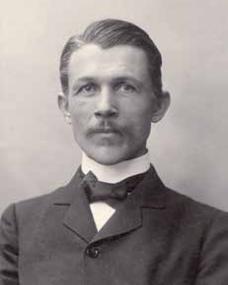
Swedish scientist Knut Angstrom conducted experiments suggesting that an increase in carbon dioxide would only have an insignificant impact on radiation absorption, rebutting Arrhenius’s conclusions. Angstrom’s experiments were accepted by many geologists at the time as an effective rebuttal to Arrhenius’s previous experiments and conclusions.
Responding to questions about Arrhenius’s research, T.C. Chamberlain was quoted saying “I greatly regret that I was among the early victims of Arrhenius’ error.”
Learn More1900
Physicist William Jackson Humphreys also rebutted Arrhenius’ conclusions, arguing that an increase or decrease in carbon dioxide would have no impact on the earth's temperature.
Book: Physics of the Air, 1920
1920
In a publication, G.S. Callendar, a scientist at the British Electrical and Allied Industries Research Association, estimated a rise in global temperatures of 0.003℃ per year due to the artificial injection of carbon dioxide that had taken place to date, and asserted that humankind was “throwing some 9,000 tons of carbon dioxide into the air each minute.” Callendar concluded his study by stating that the combustion of fossil fuel “is likely to prove beneficial to mankind in several ways, besides the provision of heat and power. For instance the above mentioned small increases of mean temperature would be important at the northern margin of cultivation, and the growth of favorably situated plants is directly proportional to the carbon dioxide pressure. In any case the return of the deadly glaciers should be delayed indefinitely.”
“The artificial production of carbon dioxide and its influence on temperature”
1938Gilbert Plass demonstrated that water vapor and carbon dioxide absorbed and emitted energy at different wavelengths, and therefore should have separate effects on climate. Plass’ calculations indicated that a doubling in atmospheric carbon dioxide concentrations may result in a rise in Earth’s average temperatures of 3.6°C
Learn More1953The U.S. government established the first major climate modeling center, the Geophysical Fluid Dynamics Laboratory, under the National Oceanic and Atmospheric Administration (“NOAA”), now at Princeton University. Several other centers opened shortly thereafter.
Learn More1955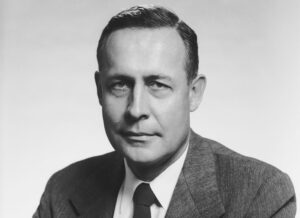
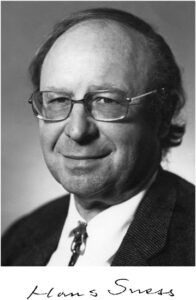
Roger Revelle and Hans Suess, scientists at the Scripps Institution of Oceanography, proposed that the majority of anthropogenic carbon dioxide released to date was most likely absorbed by the ocean, but the percent remaining in the atmosphere may “become significant during future decades if industrial fuel combustion continues to rise exponentially.”
Learn More1957
One of the earliest foundational studies measuring carbon dioxide in the atmosphere was conducted by Charles Keeling at the Mauna Loa Observatory. This research produced the well-known “Keeling Curve,” showing the increase in atmospheric carbon dioxide over time.
The National Science Foundation’s Special Commission on Weather Modification published a report titled Weather and Climate Modification, which estimated that carbon dioxide increased by 10-15% in the 20th Century, resulting in significant changes to Earth’s heat balance.
Learn More1965
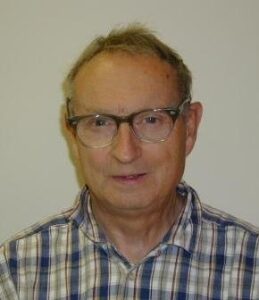
Syukuro Manabe and Richard Wetherald, scientists at Princeton University’s Geophysical Fluid Dynamics Laboratory, developed a climate model that could simulate, among other things, the way air and moisture conveyed heat from the Earth’s surface into the upper atmosphere. Using this model, they estimated that a doubling of the CO₂ level in the atmosphere could lead to raising the temperature of the atmosphere by about 2.3℃. For this and other contributions to the field of climate modeling, Mr. Manabe was awarded the Nobel Prize in 2021.
Learn More1967American scientist, Charles Keeling’s measurements showed that at least 40% of the carbon dioxide produced from fossil fuel combustion remained in the atmosphere instead of being absorbed by the ocean, plants, or other natural carbon sinks.
Learn More1969The Massachusetts Institute of Technology published Inadvertent Climate Modification: Report of the Study of Man’s Impact on Climate to “raise the level of informed public and scientific discussion and action on global and regional climate problems.”
Learn More1970J. Murray Mitchell, a National Oceanic and Atmospheric Administration research scientist, published a study that estimated the effect on the earth’s temperature of increasing aerosol particle concentrations.
1971

Princeton University’s Geophysical Fluid Dynamics Laboratory scientists Syukuro Manabe and Richard Wetherald constructed one of the first computer-based three-dimensional Global Climate Models.
1975The National Academy of Sciences published a report entitled Energy and Climate that expressed a concern about the “highly adverse consequences” that may occur due to increased use of fossil fuels for energy.
National Academy of Sciences, Energy and Climate (1977)
1977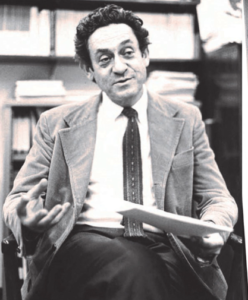
The U.S. National Research Council published Carbon Dioxide and Climate: A Scientific Assessment. The report, which came to be known as the “Charney Report” after the report’s chair, meteorologist Jule Charney, concluded that the composition of our atmosphere was indeed changing and, based on the results of five available climate models, that “the equilibrium surface global warming due to doubled carbon dioxide will be in the range 1.5°C to 4.5°C, with the most probable value near 3°C.”
Learn More1979The U.S. Environmental Protection Agency published the Environmental Outlook 1980, which noted that carbon dioxide increased over the past 100 years, and that carbon dioxide emissions, will result in a “predicted increase in global mean temperature from a ‘greenhouse effect.’”
Environmental Protection Agency, Executive Summary: Draft Environmental Outlook 1980, 5 (1979)
1980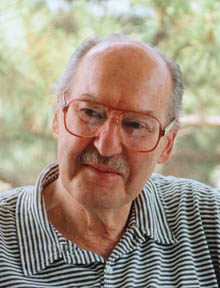
The U.S. National Research Council published a follow-up report, Carbon Dioxide and Climate: A Second Assessment, chaired by NOAA climate modeler Joseph Smagorinsky. The “Smagorinsky Report” concluded that the increase of atmospheric carbon dioxide was primarily due to combustion of fossil fuels, the rate of which would drive the atmospheric accumulation of carbon dioxide in the future.
The United Nations Environment Programme (“UNEP”) and the U.S. EPA held an International Conference on the Health and Environmental Effects of Ozone Modification and Climate Change.
Learn More1986The UNEP and the World Meteorological Organization established the Intergovernmental Panel on Climate Change (the “IPCC”) with the objective of “provid[ing] policymakers with regular assessments of the scientific basis of climate change, its impacts and future risks, and options for adaptation and mitigation.”
Learn More1988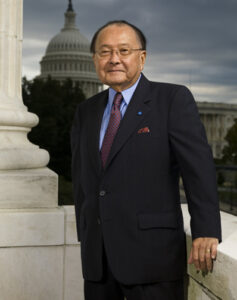

Hawaii Senators Daniel Inouye and Spark Matsunaga both co-sponsored the “National Energy Policy Act” which sought to combat global warming, including reducing carbon dioxide emissions 20% by 2000.
Learn More1988The IPCC’s First Assessment Report, released in 1990, documented the increase of greenhouse gas concentrations since preindustrial levels. At the same time, the IPCC observed that “it is not possible at this time to attribute all or even a large part of the observed global warming to the enhanced greenhouse effect on the basis of observational data currently available.”
IPCC’s First Assessment Report
1990In a report to Congress in 1991 titled “U.S. Efforts to Address Global Climate Change” the U.S. Department of State and EPA, like the IPCC, recognized the risk of climate change, but noted that significant scientific uncertainties remained: “The possibility of global climate change has become an issue of great concern in the international community and within the United States.
Learn More1991The National Academy of Sciences released a report titled “Policy Implications of Greenhouse Warming,”
[National Academy of Sciences: Committee on Science, Engineering and Public Policy, Policy Implications of Greenhouse Warming: Mitigation, Adaptation, and the Science Base, ix (1992).]
1991The IPCC released its Second Assessment Report, which reflected an evolution of confidence in scientific understanding in the role of major factors in climate change.
1995According to the IPCC, new evidence indicated that human activity was “likely” responsible for “most” of the warming observed.
IPCC, Climate Change 2001: The Scientific Basis – Contribution of Working Group I to the Third Assessment Report of the Intergovernmental Panel on Climate Change, 10 (J.T. Houghton et al., eds., 2001).
2001The National Academy of Sciences cautioned that the conclusions in the IPCC’s 2001 report should not be overstated: “Climate projections will always be far from perfect. Confidence limits and probabilistic information, with their basis, should always be considered as an integral part of the information that climate scientists provide to policy and decision makers. Without them, the IPCC [2001 report] could give an impression that the science of global warming is ‘settled,’ even though many uncertainties still remain.”
Climate Change Science: An Analysis of Some Key Questions | The National Academies Press
2001The IPCC’s Fourth Assessment Report, released in 2007, expressed a much stronger certainty regarding the link between global warming and human activities, reporting that “[m]ost of the observed increase in global average temperatures since the mid-20th century is very likely [greater than 90% chance] due to the observed increase in anthropogenic greenhouse gas concentrations . . . Discernible human influences now extend to other aspects of climate, including ocean warming, continental-average temperatures, temperature extremes and wind patterns.”
2007The Fifth Assessment Report, released in 2013, scientific confidence in understanding the warming effect of greenhouse gases was characterized as “very high,” as was confidence in understanding the direct effects of aerosols on climate. Understanding of the indirect effect of aerosols, such as the mechanisms by which aerosols create and interact with clouds, was still reported as “low.”
2013196 parties at the UN Climate Change Conference (Cop21) in Paris adopted the Paris Climate Agreement, a “legally binding international treaty with the overarching goal to hold “the increase in the global temperature to well below 2°C above pre-industrial levels.”
United Nations: The Paris Agreement
2016The United States gave notice to the United Nations that they would withdraw from the Paris Agreement as soon as possible.
2017The IPCC’s Sixth assessment report, released in 2021, “addresses the most up-to-date physical understanding of the climate system and climate change, bringing together the latest advances in climate science.” The report examined “evidence for human influence
on recent climate change,” arguing that “the balance of evidence suggests that there is discernible human influence on the global climate.”
IPCC: Climate Change 2021: The Physical Science Basis
2021Congress passed the “Inflation Reduction Act,” which President Joe Biden framed as the “single largest investment in climate and energy in American history, enabling America to tackle to climate crisis.”
Department of Energy: Inflation Reduction Act of 2022
2022President Donald Trump spoke to the World Economic Forum in Davos and outlined actions he had taken to push back on his predecessors' climate agenda, noting “I terminated the ridiculous and incredibly wasteful Green New Deal — I call it the “Green New Scam”;
withdrew from the one-sided Paris Climate Accord; and ended the insane and costly electric vehicle mandate. We’re going to let people buy the car they want to buy. “
White House: Remarks by President Trump at the World Economic Forum
2025